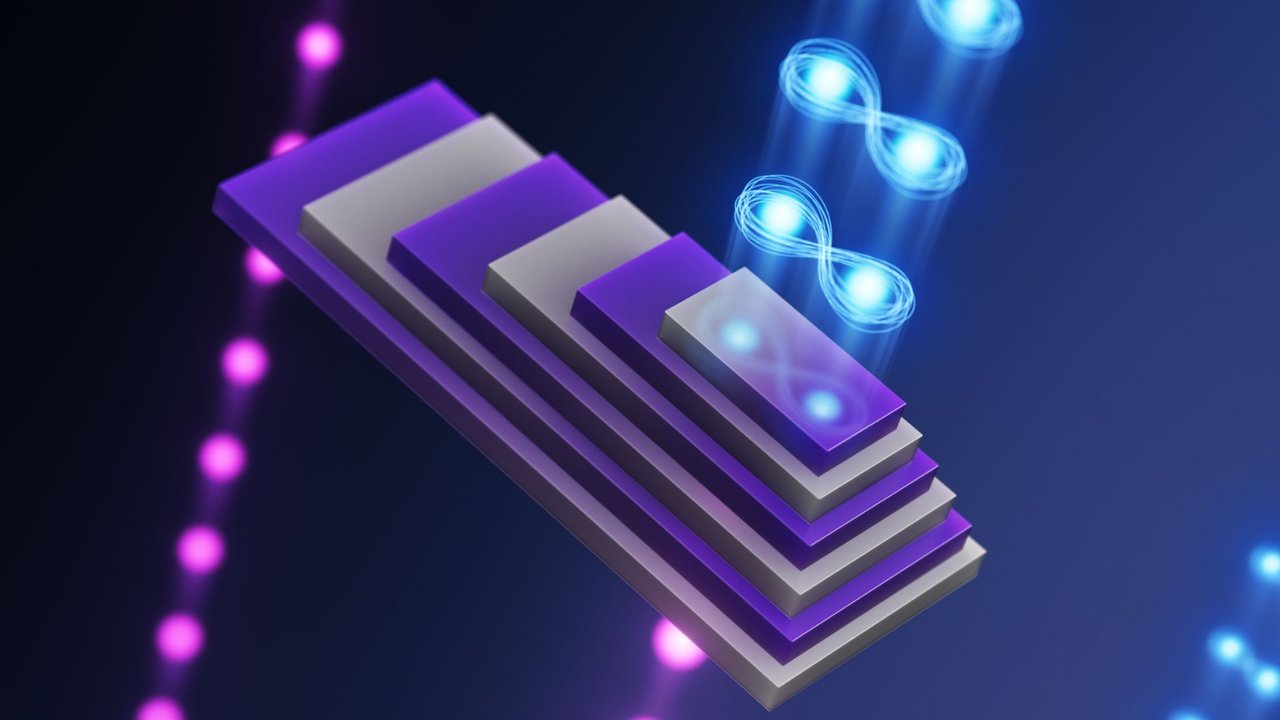Qubits at the nanoscale: new miniaturized and programmable sources of quantum bits
Nanoscale-engineered two-dimensional semiconductors can be programmed to efficiently produce quantum bits on ultracompact spatial scales. This is the result of a recent study on nonlinear optics and quantum optics published in Nature Photonics.
Qubits, or quantum bits, lie at the foundation of many quantum technologies, such as computing, cryptography, and spectroscopy. One efficient approach to generate entangled photon pairs, i.e., qubits, is using a laser and a nonlinear crystal, to induce a nonlinear process known as spontaneous parametric down-conversion. However, conventional nonlinear crystals have thicknesses of a few millimeters, or even centimeters, limiting their miniaturization and straight-forward compatibility with integrated optical devices.
The recent discovery of new two-dimensional materials, such as transition metal dichalcogenides (TMDs), has introduced exciting advancements in the miniaturization of photonic devices. TMDs are layered materials that are transforming the field of nonlinear optics due to their large optical nonlinearity.
With this study, we programmed a two-dimensional semiconductor at the nanoscale through a nanoengineering process, and for the first time we created an efficient and programmable source of qubits on micrometer scales, a thousand times thinner than 1 millimeter!
Chiara Trovatello, lead author of the study and Assistant Professor at the Department of Physics
The study has been conducted by Chiara Trovatello, Professor Giulio Cerullo of Politecnico di Milano, Milan Delor, Dmitri Basov, Cory Dean and P. James Schuck of Columbia University at New York City, Andrea Marini of Università dell’Aquila, Philip Walther and Lee Rozema of Università di Vienna, Jiwoong Park of Chicago University.
Trovatello, C., Ferrante, C., Yang, B. et al.
Quasi-phase-matched up- and down-conversion in periodically poled layered semiconductors.
Nat. Photon. (2025).

